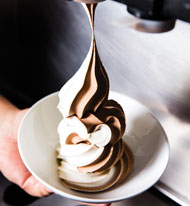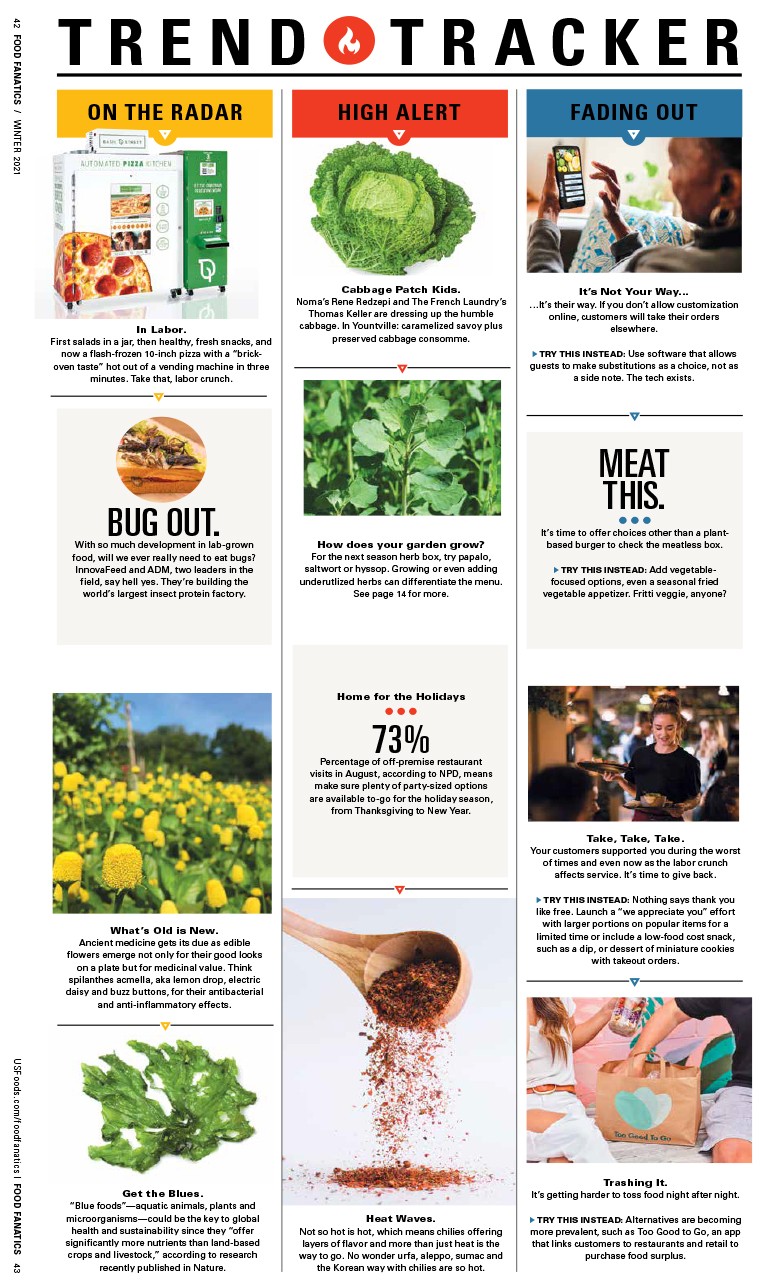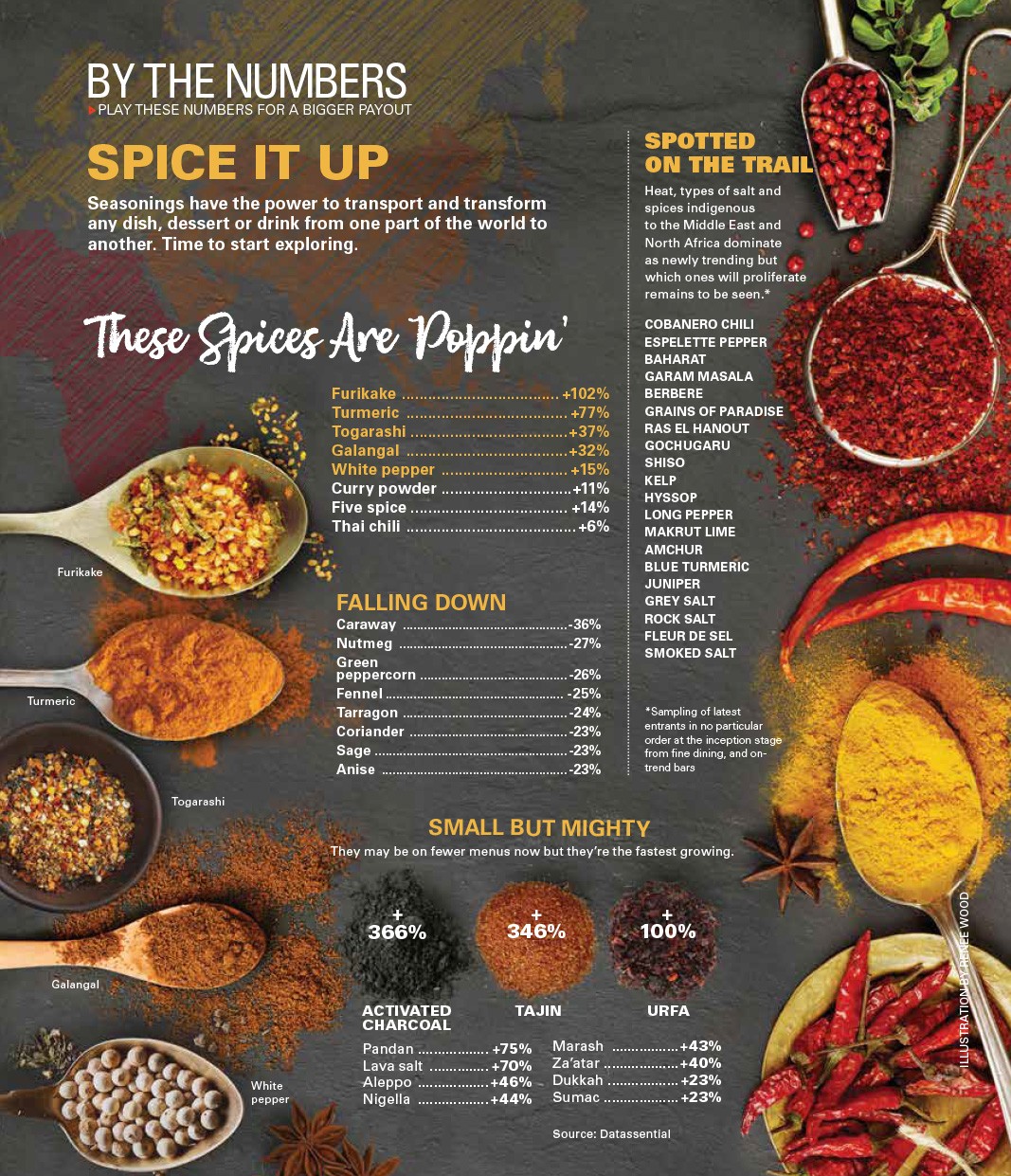Cash In On Soft Serve Ice Cream
All you need is a machine, a few flavors and toppings
Soft serve—the smoothest, creamiest and most comforting childhood treat—is finally growing up.
Nearly a decade after Momofuku Milk Bar’s Christina Tosi revolutionized soft serve with flavors like cereal milk and Cracker Jack, another wave of enthusiasts is proving that the dessert has undeniable nostalgic appeal and profitability.
Soft serve has grown 18 percent over the last four years – and 11 percent between 2013 and 2014 alone, according to Datassential, a market research firm for the foodservice industry. The NPD Group, a consumer research company, measured the popularity in servings: over 1 billion last year.
“People have great memories of eating soft serve growing up, and that’s what motivates them to order it,” says Bruce Hill, owner of four San Francisco-area restaurants that sell soft serve.
EXPLORE NEW SOFT SERVE ICE CREAM FLAVORS
Bryan Petroff and Douglas Quint, who had no foodservice experience, launched Big Gay Ice Cream from a humble food truck in 2009. Their truck became an overnight sensation, forming long lines wherever it parked. Two New York storefronts came next, and ones in Los Angeles and Philadelphia are scheduled to open this year.
The reason for the hype: their brand of kitsch, for sure. But also the elevated toppings dusted or sprinkled on their soft serve flavors, from wasabi pea dust, olive oil and sea salt to red chili pistachios and toasted curried coconut.
Vanilla continues to rank as the most popular flavor, according to Datassential. But emerging dessert flavor trends, like hibiscus, cardamom, agave, brown butter and smoke, suggest consumers are interested in venturing out of their comfort zone.
Soft serve bases, such as buttermilk, sweet pea, tomato, cucumber, Parmesan with candied country ham and even foie gras with gingerbread, have landed on the menu at Restaurant Roux, a French creole-inspired restaurant in Seattle. For the summer, former Executive Chef Mike Robertshaw is thinking about experimenting with local flowers like violets and nasturtium, along with seasonal fruit.
“It is time-consuming,” Robertshaw says. “But it’s so fun to play with something new.”
THE IMPORTANCE OF SOFT SERVE ICE CREAM BASE
Matthias Merges, chef-owner of three Chicago restaurants – Yusho, A10 and Billy Sunday churns out flavors like salted caramel with bourbon, amaro berry, burnt marshmallow, cannoli, huckleberry and Thai curry.
“I’ve always been a huge fan of the texture of soft serve, and what you’re able to do with it,” Merges says. “I wanted to bring it back in a way that was more creative.”
Like Robertshaw, Merges develops a base in-house, which is different depending on sugar content and viscosity.
Adding fresh fruit, for example, changes the amount of sugar and water in the base. So, Merges might add an emulsifier, such as eggs or xanthan gum, for stability.
For Robertshaw’s in-house base, non-fat powdered milk and agar work as a stabilizer with different ratios of whole milk, cream and sugar. Seasonal fruit is cooked down to evaporate excess water and to ensure the soft serve doesn’t get icy.
“I have a set recipe that we worked out that’s just a plain, milk-flavored base,” Robertshaw says. “Depending on what you’re going to add, you have to fluctuate the fats.”
A premade base, however, takes away the guesswork. Hill worked with Straus Family Creamery, an organic dairy in northern California, to develop a base for his restaurants. It’s also sold to other restaurants in the area, such as Alta, an Eastern European-influenced neighborhood bistro in San Francisco.
Social media lights up when Tosi of Milkbar (eight locations and counting) rolls out new soft serve flavors, be it cranberry limeade, yuzu citrus verbena or sticky toffee pudding.
GET CREATIVE WITH SOFT SERVE ICE CREAM TOPPINGS
Toppings can intensify flavors and texture (think dehydrating or oven-drying ingredients). For example, brown butter and white chocolate are cooked down for brown-butter solids. Tosi also tosses crushed cornflakes with milk powder, butter and sugar, and bakes the mixture until crunchy and offered as a regular add-on.
People have great memories of eating soft serve growing up, and that’s what motivates them to order it."
-Restaurateur Bruce Hill
So when a premade base seems limiting, toppings can do the heavy lifting.
At Alta, Chef Yoni Levy turns simple soft serve into complex desserts. For baklava, vanilla is added to the malted soft serve base. Phyllo dusted with cinnamon, sugar and cardamom serves as a topping with toasted pistachios and honey-vanilla syrup. It’s then finished with crunchy salt and olive oil. The peach cobbler soft serve dessert is similarly deconstructed with streusel, hazelnuts, peaches and whipped cream. For the late-night bar crowd, Levy offers up soft serve ice cream sandwiches.
Even though Alta is a sit-down restaurant, “lots of people just walk in for soft serve to-go,” Levy says, “because the flavors are so creative and fun.”
SOFT SERVE ICE CREAM COST AND PROFIT MARGINS
Pour base in the machine; pull handle. Pretty simple, right? Considering the ease, it’s no surprise that soft serve can be a moneymaker. The initial investment for the machine, depending on capacity, starts around $5,000. Chefs say it’s best to gauge the operation’s volume to make the ideal choice.
Hill’s Pizzeria Picco in Larkspur, California, sells $250,000 in soft serve annually, while his Italian concept, Zero Zero in San Francisco, brings in $300,000. Hill says the food cost is around 20 percent, but skews higher or lower, depending on the expense of toppings. Nearly all operations, however, charge extra for them, typically 75 cents to $1.
For some chefs, it’s tough to hold back from the endless toppings.
“Sometimes there are great food costs,” Levy says. “And sometimes we get so excited about all the toppings, the food cost is higher.”
The product costs for soft serve can vary, depending on what sort of quality you’re going for. The higher the butterfat content of the soft serve you choose to sell, the more the ingredients are going to cost you. Multiple flavors can also add additional expense to your soft serve operation, but they can also significantly increase your soft serve sales. Another variable, of course, is cones. Your basic cake cone is going to cost the least, but higher-end cones like waffle cones or bowls are true crowd pleasers. Sundaes, shakes and floats draw in more customers as well, but come with the added expense of toppings, sauces and specialized machinery. In the end, the higher the quality of your product, the more you’ll be able to charge, potentially making the investment in time, equipment and ingredients worth it.
Even with the higher cost of premium product and equipment, though, soft serve comes with a huge profit margin, at around 70-80%. As long as you can fill seats, you can make your money back and then some.
Heather Lalley is a Chicago-based food writer with a degree in baking and pastry arts. She has never said no to a swirl cone.
CUSTARD VS. SOFT SERVE
Soft serve and frozen custard are used interchangeably, but they couldn’t be more different. San Francisco restaurateur Bruce Hill offers frozen custard at Fog City and soft serve at his three other restaurants. He breaks down the differences:
SOFT SERVE
- Dispensed from a machine in a swirl
- Sometimes made with eggs
- Less fat (around 5 percent)
- Light and creamy
- Lots of air
- Soft, but not scoopable
- Cannot be frozen; must be eaten immediately
- Does not need to be fresh; no waste
FROZEN CUSTARD
- Made in a continuous flow freezer; cannot be dispensed like soft serve
- Always made with eggs
- Higher fat (around 10 percent)
- Dense and chewy
- Almost no air
- Soft and scoopable
- Can be frozen
- Must be made fresh
SOFT SERVE VS. ICE CREAM
Most soft serve is made with the same ingredients as ice cream, with one difference: the milk fat content. Here are all the key differences between ice cream and soft serve:
SOFT SERVE
- Made with 3-6% milk fat content
- Soft consistency
- Dispensed from a machine
- Is stored at around 25° F
- Made with air churned into it, making it fluffier than regular ice cream.
- Can’t be frozen
ICE CREAM
- Made with 10-18% milk fat
- Harder than soft serve
- Scooped from a tub
- Needs to be stored at around 5° F
- More dense than soft serve
- Is kept frozen
 Tell Me A StorySoft serve has that kid-like, nostalgic thing going for it, but there’s some science behind its age-spanning popularity. The temperature of soft serve is about 20 degrees, compared with ice cream’s 5 to 10 degrees. This allows taste buds to pick up the flavors faster and lead to quicker gratification. |



